2486
Reinventing Grocery Shopping By Taking your Business Online
31 Aug, 2020
14 min read
2486
31 Aug, 2020
14 min read
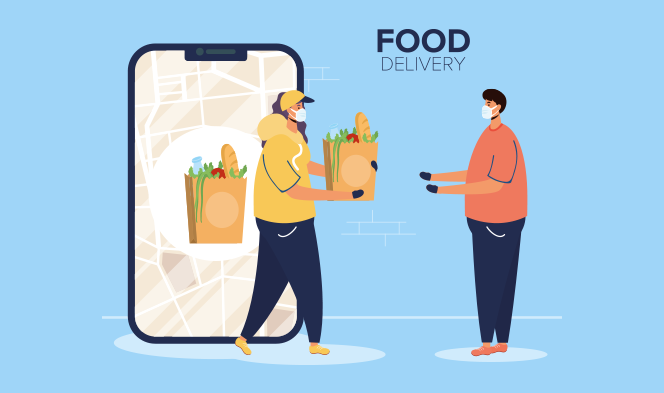
Grocery shopping is an essential yet boring part of life. When we enter a shopping mall, we are very likely to get lost in different lines and purchase things which we don’t even need. As a result, we are most likely to spend more than our budget. Moreover, standing in long queues after a tiring day at work or college is something that most of us don’t want, at least not on Fridays.
When they ask, "Can you do the grocery shopping when you get off work on Friday?”
❕❕🚩
❕❕🚩🚩
❕❕🚩🚩🚩
❕❕🚩🚩🚩🚩🚩🚩
❕❕🚩🚩🚩🚩
❕❕🚩🚩🚩
❕❕🚩🚩
❕❕🚩
❕❕
❕❕
❕❕
❕❕— Instacart (@Instacart) October 14, 2021
This constant chaos and monotonous routine gave rise to online grocery shopping. According to research from Statista, the online grocery market generated sales of 95.8 billion dollars in 2020 in the USA. This clearly shows that the amount of potential online grocery app development and shopping has in the coming years.
If you are thinking about starting your own business in the online grocery shopping industry, you are at the right place. I will walk you through grocery app development, different business models, which to choose, competitors like Instacart, Walmart, and more.
Let’s start with taking example of Instacart for grocery app development and know about it in brief:
What Have We Covered
Instacart is one of the leading businesses and a game changer in online grocery shopping. Today they are the first choice for users to purchase groceries online. According to research, Instacart had a revenue of 1.5 billion dollars in 2020 with 35 million dollars of sales. We can say that Instacart is running in profits and online grocery shopping is one the fastest growing industries.
From the statistics and the number of people choosing to order groceries online I can say that it is the perfect time to start with an online grocery shopping business and develop an app like Instacart.
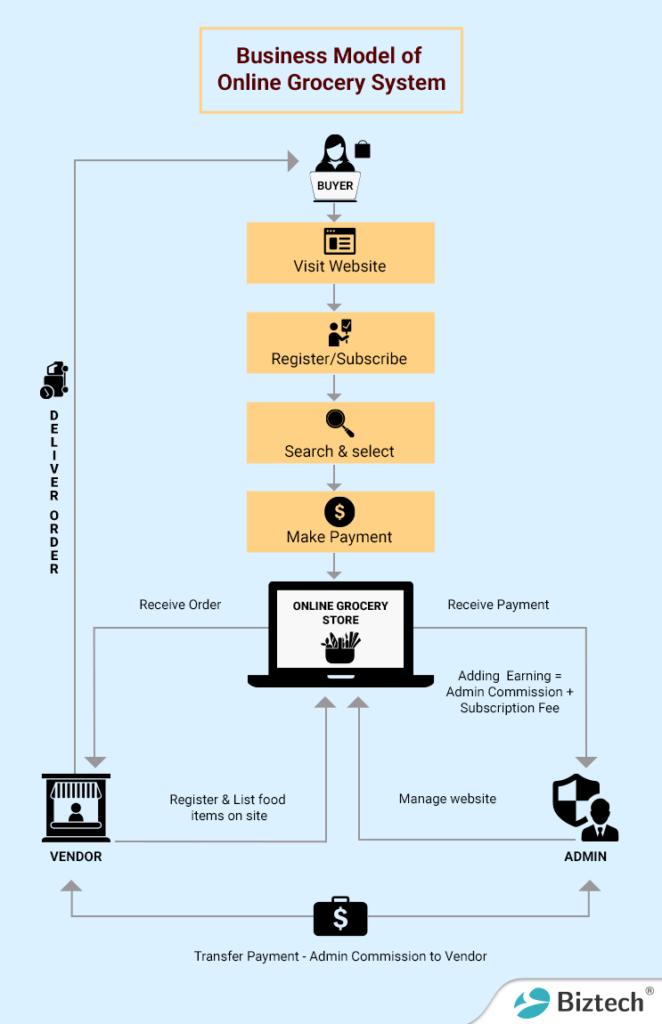
Let’s discuss some of the major benefits of online grocery shopping. It will give you insights into why many people prefer it over offline shopping.
One of the major benefits is saving plenty of time. Customers don’t need to travel, go to the supermarket, purchase a variety of things by going to different sections, or stand in long queues for checkout. With online grocery shopping, they can easily order all the necessary items from your app from the comfort of their homes and have them delivered.
Users can have an ease to develop the same products from different grocery stores and save the most they can. Comparing multiple products helps customers to make quick decisions and purchase products.
When we are shopping for things from grocery chains one of the common problems we face is items running out of stock or items not available. This results in customers moving from one store to another making multiple trips back to the store to check if the item is in stock. This entire process can be troublesome. But no more with grocery store app development. When items are back in stock they are notified which helps to avoid unnecessary travelling.

There are multiple types of business models available, when thinking of Instacart like app development, your first step is to see various types of businesses and choose the one which suits you.
Here, grocery business owners have their own menus and delivery personals. They take business online by developing an application and deliver items on their customers’ doorsteps. Many business owners opt for this type of model if they can and have all the necessary resources and investments to make.
When starting with online grocery mobile app development, this is the most common type of business model which companies like Instacart opt for. Here, the app and business owners like you will connect with multiple grocery stores in different areas. Aggregator model is considered to be the most used model for businesses as it is more profitable for each user compared to other models.
In this type of model, grocery store owners can make their own app and provide their users with grocery shopping experience. This helps various single store owners to have loyal customers and provide their users with better customer service.
Many big grocery store owners partner with technical companies like us for grocery mobile app development for their own store. Customers can order needed groceries from these grocery stores and deliver it to their customers.
Now, it’s time for you to think which type of business model you would like to run your business on onced you start with online grocery app development.
We recommend most of our customers to go with Aggregator models and develop an app like Instacart. Aggregator model provides lots of benefit to customers, delivery personals, grocery store owners, and also to you. Hence an overall win-win situation for everyone.
Next up, let’s see how to start with online grocery shopping app development step by step:
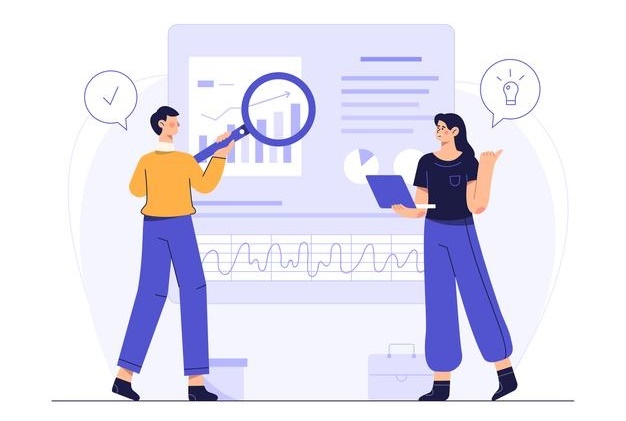
Your first step when starting with grocery shopping app development is to carry out market research. Start with researching and understanding your market needs, it will give you more clarity and insight into how to solve market needs and provide your users with the required service. Once you have clarity on this, your next step is to define your target audience. Defining this will help you to connect better with your users.
Moreover, on the basis of the researched data you can also define features for your application, which helps you to provide overall good user experience to your users.
This is the most important step when starting with Instacart app development. As discussed above, there are multiple types of business models, you need to decide the one you want depending on the type of services you prefer to provide.
When asked, we mostly recommend our clients to choose the aggregator model for their grocery store app development as it brings profit for every stakeholder. Many big companies like Instacart are using this model and reaching millions of households with their needed items.
Moreover, deciding a business model is also important for your company, as it helps you to carry out business processes easily. A predefined business model helps you to serve your customers better and benefit all the stakeholders of the business.

Designing your application is one of the most important things for grocery app development to provide your users with an ease to use your application. A clear user interface inspires the right flow of a user’s navigation within the app, making the experience frictionless.
Design your application in a way that it is easy to understand, appealing for your users and they can easily learn how to navigate it.
Following are some benefits which good UI/UX can bring for your application:
Wondering how to make an app like Instacart? You need to get in touch with a technology company like us who can help you with developing a grocery application. At grocery app development company, Biztech, we have experienced developers and marketers who can help you to develop and market your application. Having been in the industry for more than a decade we have helped plenty of our clients with varied services and helped them grow their business.
Moreover, we have a team of experienced industry professionals who will help you at each stage of grocery app development, understand your problem, and guide you. Reach out to us and we will help you start with Instacart app development, answer all your questions on how to create an app like instacart, and successfully turn your ideas to life.
Admin:

Admin can login to their account and can access their dashboard. They can view vendors, customers, payment details, number of orders delivered, and more.
Once the vendor has registered, admin can accept or reject them from their dashboard.
Admin can efficiently manage their customers and view important information like name, address, and number if needed.
Admin can view the list of vendors and manage them. Admin can view important information like name, store address, number of daily deliveries, etc.
Admin can manage payments, they can view partial payment, full payment, pending amount, and more from their dashboard.
Customers:

End-customers can sign up or log into your application to use it. Once done, they can access their personalized dashboard. Here they can view nearby stores, grocery items they want, apply filters, and more.
Once users have placed an order, vendors will accept it and the delivery person will be assigned. Further, customers can track their orders and view information of the delivery person, their temperature, location of the order and in how many minutes it will arrive.
Customers can search particular products from a wide range of products, compare their prices, and can add them to cart.
Customers can purchase groceries and upon checkout, they can schedule the delivery according to their choice. This ensures that someone is at home to collect the orders.
Customers can pay securely using multiple payment methods integrated in the app.
Once customers have placed their orders, they get confirmation via SMS and notifications.
Vendors:
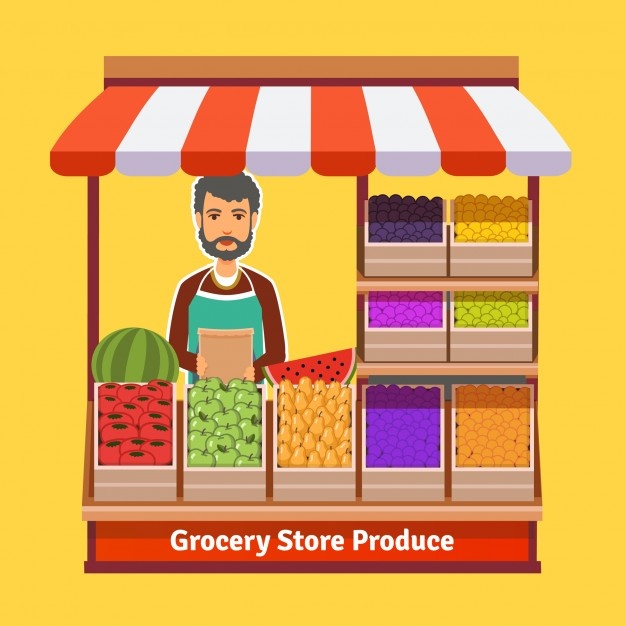
Upon sign up or login, vendors can have access to their dashboard. Here, they can view lists of orders, cancel orders, successful delivery, and more.
Vendors will sign up with all their documents for registration. Then admin will then accept or reject them.
Vendors can manage their entire profile. They can view complete lists of orders, cancelled orders, successfully delivered orders, payment status, and more.
Vendors can easily configure their working hours and make them flexible according to their needs. This helps end-users to select the delivery hours according to their needs.
Vendors can allocate orders to their delivery person directly via their dashboard. Delivery person will be notified about their next orders and they can either accept or reject it.
Admin can manage their inventory digitally. They are notified when the products are out of stock and the admin can easily place an order from the dashboard.
Admin can plan and strategize their entire marketing campaign and can run various campaigns from the backend.
Admin can also view reviews and feedback of their customers, accept and make them live, and can work according to their customers’ feedback.
Delivery Panel:
Delivery people can use Google Maps to search for directions on it and deliver products hassle-free.
Delivery people can accept or reject delivery services based on their nearby locations and go for their next delivery.
Delivery person will be notified about their next delivery via a notification and they can accept it depending on their schedule.
In case of any trouble or difficulty in finding an address, delivery person can interact with their customers directly and notify in case of late delivery or ask for help in case of loss in directions.
Delivery people can view their working days and hours. This helps them to plan their schedule and provide their customers with timely deliveries.
Delivery people can view their number of orders with all the necessary details like delivery address, customers’ number and names, time of delivery, and more.
The new normal is not so normal, but people are trying to adopt it. To help people with this new trend of precaution and safety first, many on demand delivery services have come up with innovative features to provide grocery and other deliveries at doorstep. Here are some features that you can incorporate when you start with Instacart like app development:
When thinking how to build an app like Instacart, your next step is to decide the technical stack for developing an app like Instacart as it is important to have apps which are scalable, secure, and reliable when used by millions of users. When developing a grocery app, your major target audience will be Android and iOS users. To develop an app for these two user-bases there are two ways: Native App Development and Cross-platform app development. Now you will have to decide the way you develop your app depending on which market you are targeting. Both native and cross platform app development has their pros and cons. However, depending on your budget you need to choose which one suits you best.
Native App Development:
For native app development you’ll need to invest more in hiring dedicated developers for Android and iOS, with less chances of code reusability. All these things require plenty of time and money. Being a startup, it might not be possible to invest for multiple platforms.
Cross Platform App Development:
On the other hand, in cross platform development, using a single-code base, you can develop for Android, iOS, and web. Here, you don’t need to invest more in hiring dedicated developers for multiple platforms, can easily reuse code, and overall saves plenty of time and money. Being a startup it is not recommended to invest heavily during the initial stage of development. When asked, we mostly recommend going with cross platform app development instead of native app development. There are many benefits of cross platform development like:
There are many programming languages like Flutter, React Native, JavaScript, Ruby, Dart, Xamarin, etc. which you can use for cross-platform app development. Further, to get more guidance on which programming languages to use, consult an IT company like us, that can help you develop an app like Instacart and guide you through all the technicalities and each stage of the software development life cycle.
Next up, comes an important part i.e. ways you can monetize your application. Let’s see:
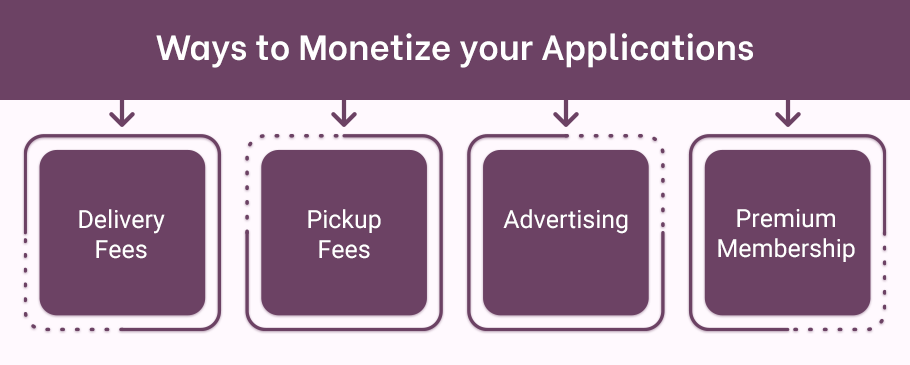
When starting a new business one of the basic things we all require is the ways you can earn money from it and expand. There are multiple ways to monetize your application and business. Let’s see at some of the points:
Delivery Fees:
When developing an app like Instacart, you are more likely to choose an aggregator model. In this type of model, on each delivery you can charge a fixed amount of money. Many online food delivery applications too follow this model. Another example is Instacart, it charges fixed delivery fees on hour-based delivery. These things are shown to the customers while placing an order, providing complete transparency to end-users.
Pickup Fees:
Another name for this is curb-side pickup fees. Customers place an order via application and during checkout they can choose curbside pickup. Here, you can charge them the same as delivery charges.
Advertising:
Grocery store owners listed on your site can apply for paid marketing in your application. This will help them to stay ahead of the competition. Such advertising will put them in front of the eyes of the users and monetize your app.
Premium Membership:
Provide customers with a feature in which they can easily get a membership of your application and get extra benefits like discounts, early access to sales, free delivery, curbside pickup, and more. This will ensure good customer service and increase customer loyalty.
Need more ways to monetize your application? Reach out to us and our experienced marketers will help you with developing marketing plans.
Going further, let’s look at some of the major examples of online grocery shopping and how these companies are changing the grocery industry.

Walmart needs no introduction. You can get almost anything and everything from their offline as well as online store. Users can easily order anything they want from the comfort of their homes and get things delivered easily.
Takeaway:
Customers can get any and everything with just a few clicks at very reasonable prices.
Shipt was launched in 2014 and provides grocery delivery from local shoppers to over 250 metros throughout the US. Using Shipt, people can get their orders delivered to their friends and relatives too. It has a monthly subscription of $14 and early subscription of $99.
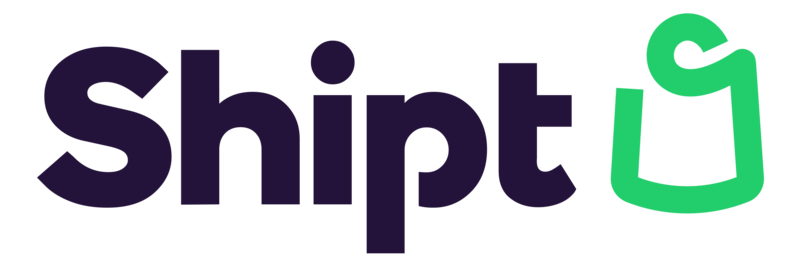
Takeaway:
Customers need to buy a membership before placing their order. This helps them to provide the best possible service to their customers and increase customer loyalty. However, the compulsion of choosing the subscription plan can also become a hurdle in gaining new customers.
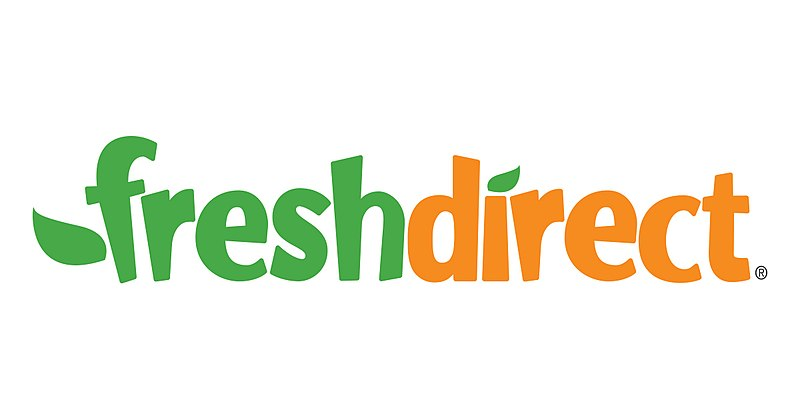
Freshdirect partners with local farms, dairies, and fisheries, and provides a comprehensive list of 3000 products to choose from. It is more popular on the East coast and mostly provides grocery delivery services in locations such as New York, New Jersey, Delaware, Pennsylvania and Washington D.C.
Takeaway:
Providing local farms and dairies the opportunity to bring their business online and get more customers. It provides freshly baked food, family meals, farm quality food, and more, everything at an affordable cost.
With its roots in 1989, Peapod is the oldest and experienced grocery delivery service provider. It is the most efficient and its order genius feature – reordering the previous order, meal kit feature makes it a tough competitor.

Takeaway:
Being the oldest contender they know their customers better and provide their customers with great service with features like easy re-ordering, meal-kit features, and more.
This approach is already existing, thanks to the spread of virus that demanded for a contactless delivery. Companies such as Wings provide this type of deliveries for shipping snacks and healthcare products in Finland, Australia etc. It is just a start but the future of this delivery system is bright.
Amazon Go’s cashier less feature will be a demanding feature in the near future. Walmart is trying to replicate the same for their store. Instead of building your tech based store like Amazon, you can start slow, where customers can order and pay online and go to the store to pick.
Integrating AI for product quality check. Customers can know when the product was brought into the store and if the grocery item is fresh enough.
What if a customer wants to check the price of a product in different stores before buying? Adding a product comparison feature will help customers on a tight budget to order wisely.
Online grocery shopping market is booming like never before and it is a perfect opportunity to start your own online grocery shopping business. Your search for the right guidance ends with grocery app development company, Biztech. Reach out to us and our team of skilled developers will provide you with complete custom development services and complete grocery app development cost to develop an app like Instacart.
Having been in the industry for more than a decade, we have helped many clients to start their business, increase their ROI, and expand. With our experienced professionals, put your burden back and start with grocery shopping app development which serves your business logic and provides you with a complete software development solution.
All product and company names are trademarks™, registered® or copyright© trademarks of their respective holders. Use of them does not imply any affiliation with or endorsement by them.

.NET
20
By Devik Gondaliya
15 Jul, 2025

.NET
25
By Devik Gondaliya
15 Jul, 2025
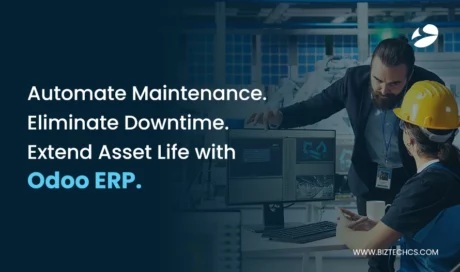
Odoo
60
By Biztech
15 Jul, 2025